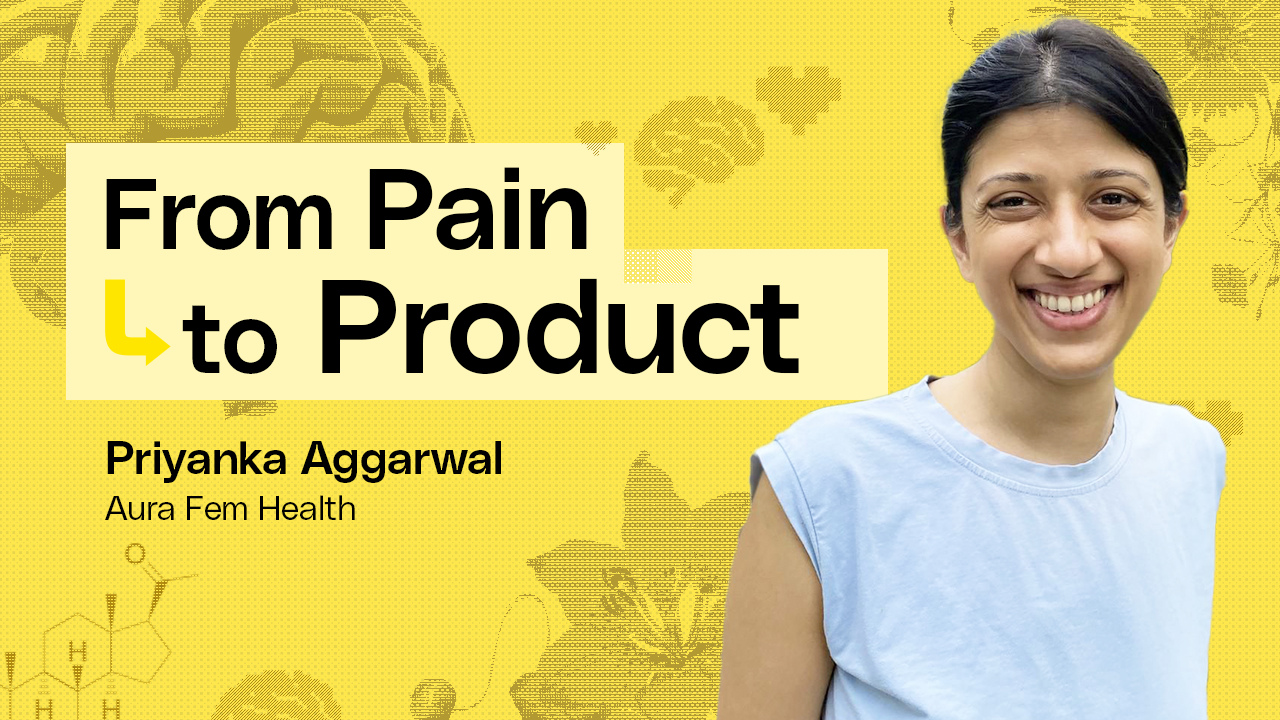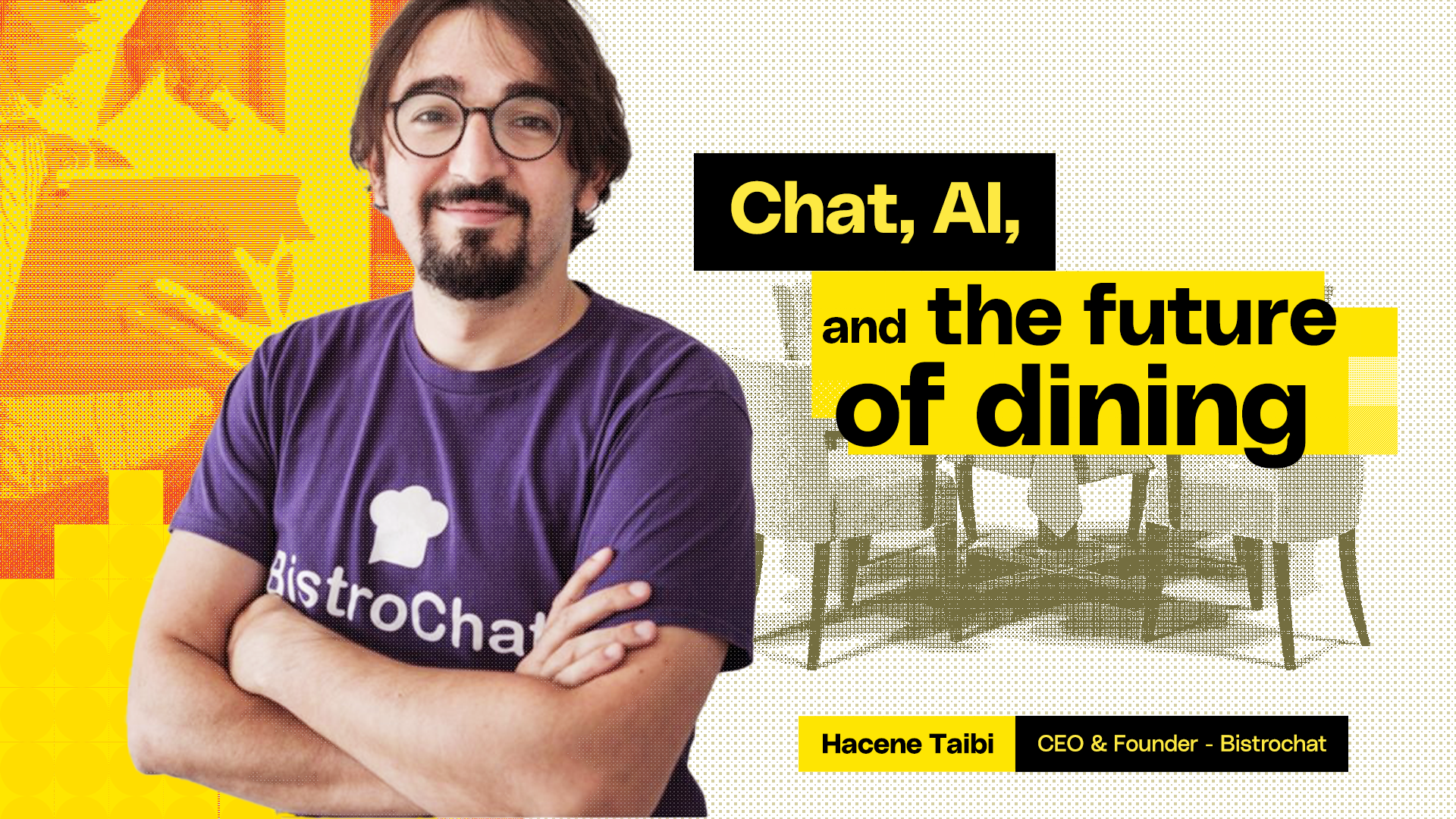
{{big-quote}}
Let's be honest about how you got here.
You've made it this far on three things: a solid product, more grit than any reasonable person should possess, and probably a handful of early adopters who genuinely love your tech because they're just as obsessed with the problem as you are.
But here's where things get interesting—and by interesting, I mean terrifying.
The game changes after Series A. The market you're now trying to crack doesn't care about your elegant architecture or that clever algorithm you spent six months perfecting. They care about one thing: what problem you solve and whether they believe it's worth solving.
It's time to make a fundamental shift from being obsessed with your product to being obsessed with distribution. And distribution starts with a story that people actually want to hear.
Your real competitor is indifference
Most founders spend sleepless nights worrying about that other startup in their space—you know, the one with the flashier website and the bigger Series A announcement on TechCrunch.
Here's the plot twist: they're not your real competition.
Your biggest competitor is indifference. It's the prospect who doesn't even believe they have the problem you're solving. It's the enterprise buyer who's been getting by with spreadsheets and manual processes for years and doesn't see why they need to change now. It's the status quo that whispers, "If it ain't broke, don't fix it."
Most markets aren't sitting around desperately waiting for your solution to arrive. They're getting on with their lives, using whatever workaround they've cobbled together, completely unaware that there's a better way.
This is why your first marketing job isn't to sell your solution—it's to sell the problem, and you need to know if your problem resonates before you can do anything else.
Before anyone cares about your features, they need to care about the pain you're addressing. Before they'll listen to your pitch, they need to believe that the current way of doing things is broken, expensive, or holding them back.
You're not just competing for market share; you're competing for mindshare. And mindshare goes to whoever tells the most compelling story about why change is not just beneficial, but essential.
The three-act story every founder needs to tell
Most pitches are spectacularly boring. They're just feature lists dressed up in fancy slides, delivered by founders who think that if they just explain their product clearly enough, people will obviously want to buy it.
Spoiler alert: they won't.
Investors and customers don't buy products—they buy into narratives. They want to believe they're part of something bigger, something that makes sense of the chaos they're dealing with every day.
Here's the simple three-act structure that actually works:
Act 1: The problem
This isn't just any problem—it's a massive, specific problem that costs real people real money, time, or sanity. You need to make them feel the pain so acutely that maintaining the status quo becomes unbearable.
Don't say "communication is hard." Say "marketing and sales teams waste 23% of their time hunting for the latest version of assets, leading to £47k in lost productivity per employee annually." Be specific. Be expensive. Be urgent.
Example for B2B SaaS: "Enterprise finance teams spend 500 hours per quarter manually reconciling invoices, leading to a 5% error rate and delayed cash flow."
Example for Developer Tools: "Developers waste 10 hours a week setting up and managing staging environments instead of writing code, delaying product releases by 20%."
Act 2: The insight
What's your unique, contrarian take on why every other solution has failed to solve this problem? This is where you demonstrate that you're not just another me-too product, but that you've spotted something everyone else has missed.
Maybe existing solutions are too complex for the actual users. Maybe they solve the wrong part of the problem. Maybe they require behaviour changes that humans simply won't make. Your insight needs to feel both obvious in hindsight and revolutionary in the moment.
Example for B2B SaaS: "Existing ERP systems are too rigid, and spreadsheets are too error-prone. The problem isn't the transaction, it's the manual reconciliation that no one has built a dedicated tool for."
Example for Developer Tools: "Existing cloud platforms offer primitives but require complex configuration. Developers don't want more options; they want an opinionated, one-click solution that just works."
Act 3: The proof
How does your solution fix it, and how do you know it works? This is where early traction becomes your best friend. You're not just theorising about the solution—you're proving it works with real customers, real results, and real revenue.
This isn't about perfect metrics or hockey stick growth. It's about demonstrating that you've found something that people actually want and will pay for.
Example for B2B SaaS: "Our tool automates this specific task. Our first 10 customers closed their books 80% faster and reduced errors to zero. We have $50k in recurring revenue and a waitlist of 30 companies."
Example for Developer Tools: "Our CLI tool creates a full staging environment in 60 seconds. We have 500 stars on GitHub and are used by teams at companies like Shopify and Stripe."
How to find your story
Having a great three-act structure is one thing. Discovering your unique story is another. Here's how to find it:
Conduct "pain-finding" interviews
Talk to 20 people in your target market—but don't mention your product. The goal is to listen for problems, frustrations, and expensive workarounds. Ask questions like:
- "What's the most frustrating part of your day?"
- "If you had a magic wand to fix one process, what would it be?"
- "What takes up time that you know shouldn't?"
Quantify the pain
Turn qualitative pain into quantitative metrics. When someone says "finding assets is annoying," dig deeper:
- "How much time do you waste on that per week?"
- "What happens when you can't find what you need? Does it delay projects?"
- "Has that ever cost the company money or customers?"
This is how you get to concrete figures like "23% of time wasted" and "£47k in lost productivity." Numbers make the problem real.
Test your narrative
Before betting everything on your story, test it:
- Run simple ads on LinkedIn with different "problem" headlines to see what gets clicks
- A/B test your website headline and measure engagement
- Use the story in 5 sales calls and note which parts make prospects lean forward
Your story and product evolve together. A powerful narrative helps you prioritise your product roadmap—if your story is about "saving time for busy sales reps," you'll focus on features that deliver speed and efficiency. Meanwhile, your product must deliver on the promise of your story or the narrative falls apart.
Your "brand" is just the story you tell consistently
Stop thinking about branding as logos and colour schemes. That's not branding—that's graphic design, and it comes much later in the process.
Your brand, at this stage, is simply the consistent story you tell across every touchpoint: your pitch deck, your website, your sales calls, your content, your casual conversations at networking events.
It's the narrative thread that connects everything you do, the lens through which people understand what you're building and why it matters.
Here's the test: if you pulled someone from your team aside right now and asked them to explain what your company does and why it exists, would they tell the same story you just told? Would they hit the same key points, use similar language, convey the same sense of urgency?
If the answer is no, you don't have a brand yet. You have a product with inconsistent messaging, which means you're leaving money on the table every time someone interacts with your company and walks away confused about what you actually do.
Your story needs to be so clear, so compelling, and so consistently told that it becomes impossible to forget. It should be the thing that comes to mind when someone encounters the problem you solve. It should be what investors remember about you weeks after your pitch.
The startups that scale tell better stories
The companies that grow fastest aren't necessarily the ones with the best product—though having a good product certainly helps.
They're the ones who tell a better story than everyone else in their space. They're the ones who make their market believe that the problem is urgent, that the current solutions are inadequate, and that their approach is the obvious next step.
Think of how HubSpot sold "inbound marketing," how Salesforce sold "no software," or how Slack sold a "less busy" workday. They didn't just sell products; they sold new ways of thinking, and their products were the inevitable conclusion.
Your product got you funded because it proved you could build something that works. But your story is what will get you scaled, because it's what convinces people to change their behaviour, allocate budget, and bet their reputation on your solution.
The difference between a good product and a category-defining company isn't usually technical—it's narrative. It's the ability to make people see the world differently, to reframe their problems in a way that makes your solution feel inevitable.
Your Series A validated that you can execute. Your Series B will validate that you can distribute. And distribution, at its core, is just storytelling at scale.
Don’t miss out
Don’t miss out!








